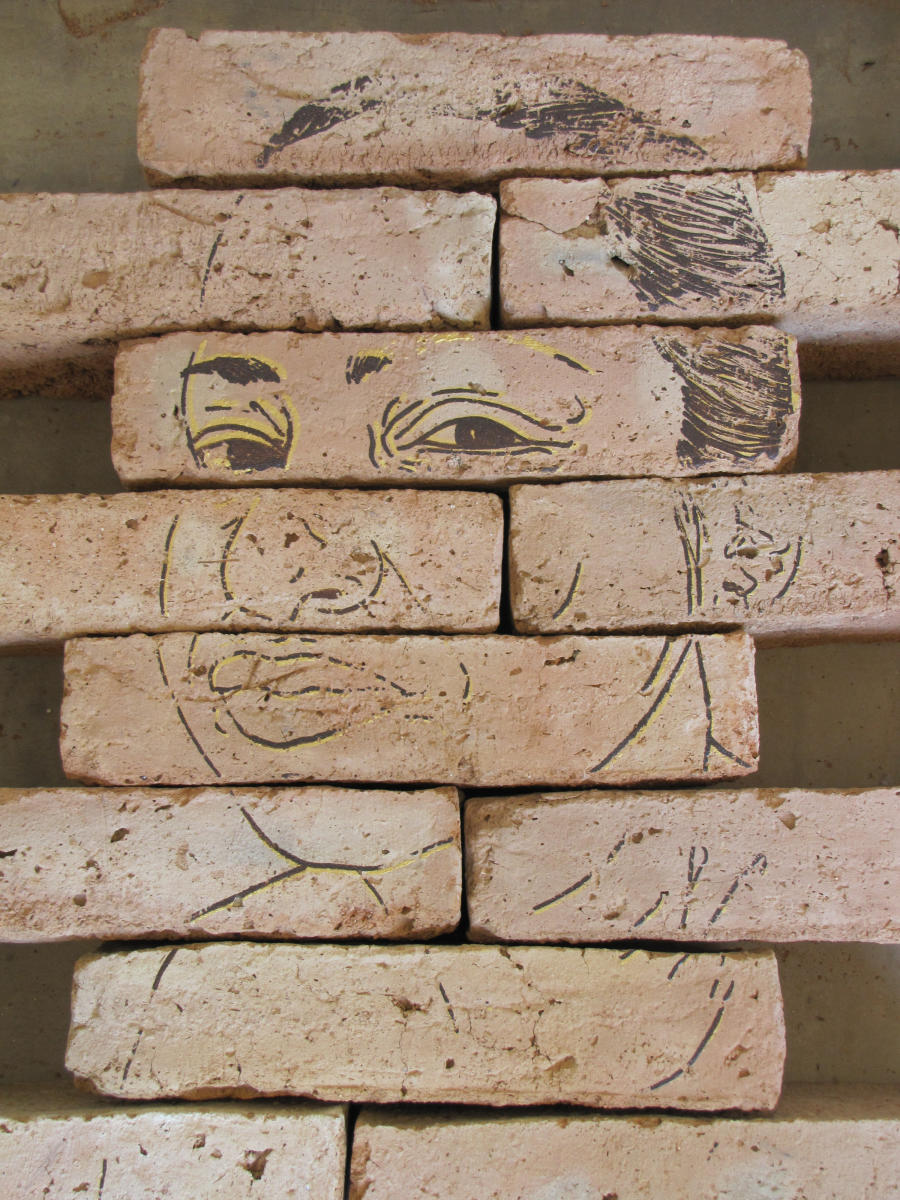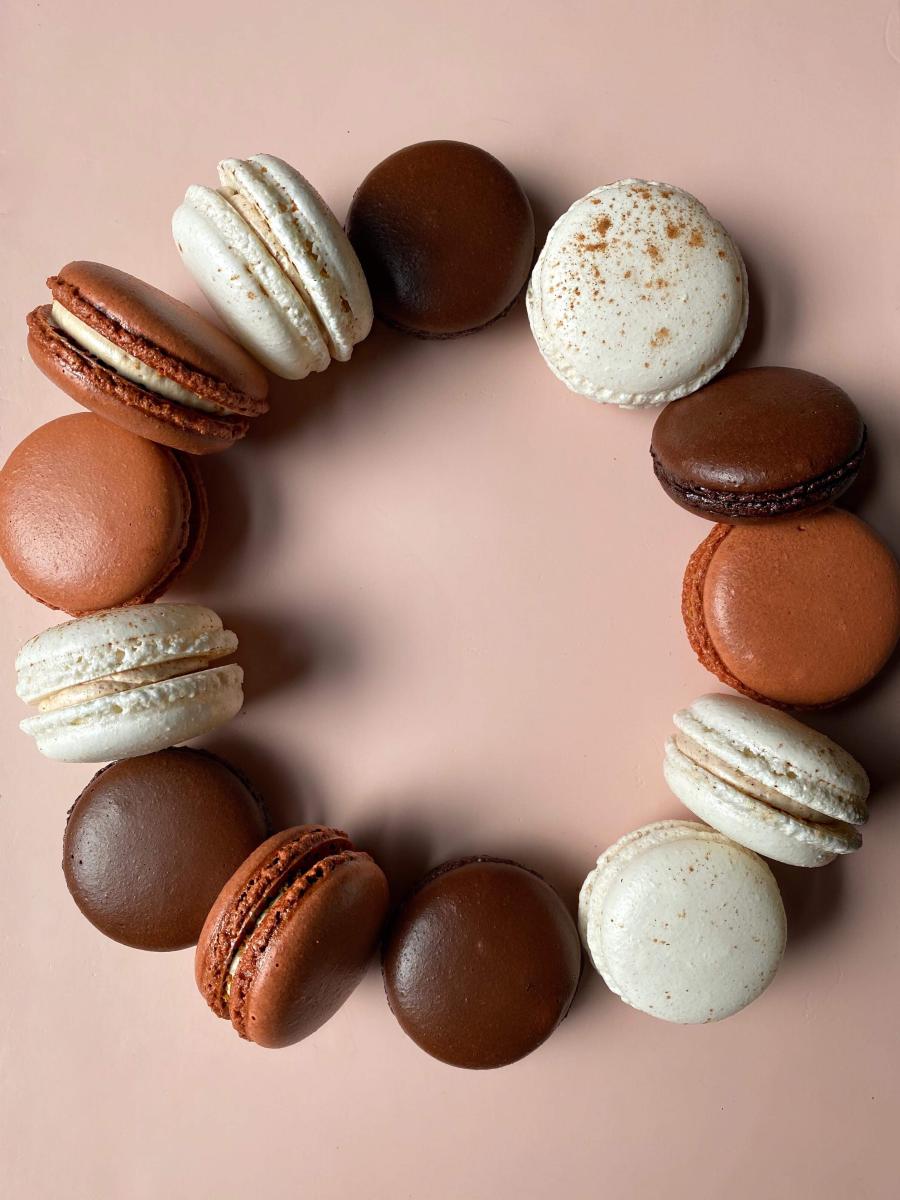Jordan Wax and Margot Leverett make up two-thirds of Margot Leverett & Duke City Hora, which performs at 7:30 p.m. Saturday. Photograph courtesy of Margot Leverett & Duke City Hora.
Celebrate like it’s your wedding day.
“Klezmer is Eastern European Jewish wedding music,” says Margot Leverett, who has been playing the traditional melodies on her clarinet since the 1980s. “It is old music, a folk music that goes back as an oral tradition.”
A founding member of the Grammy Award-winning Klezmatics, Leverett has helped revitalize the joyous and often poignant music and pass it along at klezmer camps around the world. She also serves as a master in the New Mexico Folk Arts apprenticeship program, which helped spawn her current project, Margot Leverett & Duke City Hora. The trio of Leverett, Jordan Wax (accordion and vocals), and Tanya Nuñez (bass) performs Saturday at 7:30 p.m. as part of New Mexico Tech’s livestreamed performance series. The hour-long set includes songs rescued by an ethnomusicologist before the Holocaust.
 M. Jenea Sanchez and Gabriela Muñoz's serigraphic portraits are featured in Indigenous Women: Border Matters. Photograph courtesy of the Wheelwright Museum of the American Indian.
M. Jenea Sanchez and Gabriela Muñoz's serigraphic portraits are featured in Indigenous Women: Border Matters. Photograph courtesy of the Wheelwright Museum of the American Indian.
Examine border issues through art.
There’s a lot at stake in the works of Makaye Lewis (Tohono O’odham), Daisy Quezada Ureña (Mexican-American), M. Jenea Sanchez (Latinx), and Gabriela Muñoz (Latinx), the artists featured in Indigenous Women: Border Matters, opening this weekend at the Wheelwright Museum of the American Indian, in Santa Fe. “Each piece tells a story about thriving, existing, surviving,” says curator Andrea Hanley.
The four female artists explore issues of equity, agency, and human rights faced by women of color along the border. Muñoz and Sanchez collaborated to make a wall with handmade bricks, then created serigraphic portraits on them of women from Labor Retratos Mujeres de DouglaPrieta Trabaja. The women’s collective, based in Sonora, Mexico, shares traditional knowledge and skills like sewing and growing regional foods, as a matriarchal way of creating community.
A virtual opening celebration at 6 p.m. Friday includes opening remarks from newly confirmed Secretary of the Interior Deb Haaland (Laguna Pueblo). The exhibit, which opens for in-person viewing on Saturday, runs through October 3.
Explore Holy Week traditions.
Trace Spain’s Semana Santa (Holy Week) traditions as they change in the country’s distant colonies during the virtual lecture “From Sea to Sand: Holy Week Traditions of Spain, New Mexico and the Philippines,” hosted by the National Hispanic Cultural Center, in Albuquerque, on Saturday at 2 p.m.
Fourteenth-generation New Mexican Nicolasa Chávez, curator of Latino, Hispano, and Spanish Colonial collections at the Museum of International Folk Art, discusses how traditions change when local lore and belief combine to birth to new regional practices.
“Catholic Spain came to New Mexico and the Philippines in the 1500s,” says State Historian Rob Martínez. “But over the centuries, it blended with local Native cultures to create amazing societies and religious performances.”
 Chainé offers macarons in a host of flavors. Photograph courtesy of Chainé.
Chainé offers macarons in a host of flavors. Photograph courtesy of Chainé.
Color your day with blooms and macarons.
On Saturday, Chainé, a macaron shop near the Santa Fe Plaza, blossoms in springtime colors with a popup event featuring Mini Falls Farm, a Chimayó flower farm. Score tasty macarons in special New Mexico flavors like red chile mocha or hot cocoa “the Chainé way” (decorated with fresh whipped cream, 24k gold flakes, and roses) while picking out a Mini Falls Farm bouquet, 12–4 p.m.
“It’s really nice to collaborate with other local businesses owners,” says Chainé Peña, owner of the shop “It’s a fun way to spend a little time on the weekend—enjoy a latte, a cookie, and take some gorgeous blooms home to enjoy throughout the week and make you smile.”
Spring into a new season.
Spring arrives officially on Saturday at 5:37 a.m.—at least astronomically speaking. The spring equinox marks the exact moment the sun passes over the equator and inspires celebrations throughout the world. Astronomer Laura Marseglia discusses both the science and traditions in a virtual lecture, “The Spring Equinox,” hosted by the Pajarito Environmental Education Center, in Los Alamos, Friday at 7 p.m.
“Equinox is the Latin word for ‘equal night,’ so the daytime lasts 12 hours and the nighttime also lasts 12 hours,” says Marseglia, a radiological control technician at Los Alamos National Laboratory with a passion for astronomy. For those of us in the Northern Hemisphere, the earth now begins tilting toward the sun, giving us longer days and more direct sunlight—and a great excuse to get outside.


